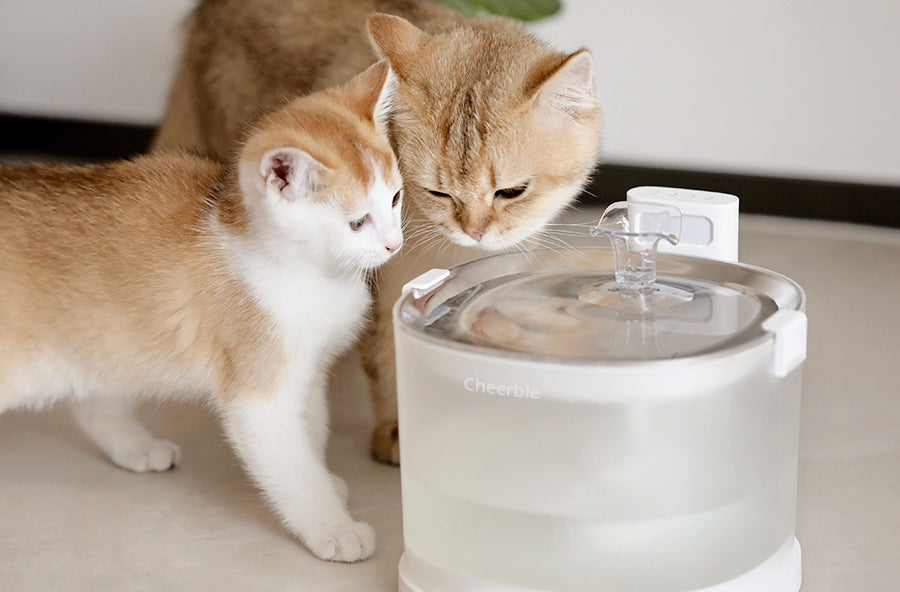As cat owners, we cherish the unique personalities and independent nature of our feline companions. However, dealing with behavioral problems in cats can be challenging. In this blog, we will explore common behavioral issues in cats and provide practical solutions to address them effectively. Understanding the underlying causes and implementing appropriate strategies will help create a harmonious environment for both cats and their owners.
Understanding Cat Behavior: To effectively address behavioral problems, it's crucial to comprehend the natural behaviors and instincts of cats. Cats are born hunters, driven by behaviors such as scratching, hunting, and territory marking. Additionally, genetics, environment, and early socialization significantly influence cats' behavior throughout their lives.

Common Behavioral Problems
Problem 1: Excessive Scratching:
Excessive scratching is a common concern among cat owners. Cats scratch for various reasons, including marking territory, stretching, and maintaining healthy claws. To redirect their scratching behavior, provide appropriate scratching surfaces such as scratching posts or boards. Encouraging and rewarding the use of these surfaces, along with using deterrents like double-sided tape on furniture, can protect belongings.
Problem 2: Inappropriate Elimination:
Dealing with a cat that eliminates outside the litter box can be frustrating. This behavior may result from litter box aversion, medical issues, or stress. To address this problem, ensure the litter box is in a quiet and accessible location. Regular cleaning, unscented litter, and multiple litter boxes in multi-cat households can also help. If the problem persists, consult a veterinarian to rule out underlying medical conditions.
Problem 3: Aggression:
Aggression in cats can stem from various factors, such as territorial disputes or fear. Understanding the type of aggression is crucial for implementing effective solutions. For territorial aggression, provide separate resources for each cat and use gradual desensitization techniques to ease tensions. Fear-based aggression requires creating a safe environment and using positive reinforcement techniques to modify behavior.

Problem 4: Excessive Vocalization:
Excessive vocalization can be bothersome, especially if it becomes incessant or occurs at night. Cats may vocalize excessively due to attention-seeking, stress, or medical issues. Identifying the cause is crucial in addressing this behavior. Ensure your cat receives enough mental and physical stimulation through interactive play and environmental enrichment. Consult a veterinarian to rule out underlying medical conditions contributing to vocalization.
Problem 5: Anxiety and Stress:
Cats can experience anxiety and stress, leading to various behavioral problems. Changes in the environment, lack of routine, or a history of traumatic experiences can contribute to their anxiety. Creating a calm and predictable environment is vital in helping cats feel secure. Provide hiding spots, vertical spaces, and interactive toys to alleviate stress. Products like pheromone diffusers can create a soothing atmosphere for your cat.
Solutions and Training Techniques
a. Positive Reinforcement:
Positive reinforcement is a powerful tool for training cats and modifying their behavior. Reward desired behaviors with treats, praise, or playtime to reinforce them. For example, when your cat uses the scratching post instead of the furniture, offer treats or praise to encourage positive behavior. Consistency and patience are key when using positive reinforcement.
b. Environmental Enrichment:
A stimulating environment is crucial for preventing and addressing behavioral problems. Interactive toys (such as our Cheerble Ball / Ice Cream Ball), puzzle feeders (such as our Wicked Egg), and regular play sessions engage cats mentally and physically. Providing vertical spaces, such as cat trees or shelves, allows them to exercise their natural climbing instincts. Rotate toys and offer new stimuli to keep them engaged.

c. Seeking Professional Help:
In some instances, cat behavior problems can be complex or persistent, requiring professional assistance. If you've tried various strategies without success, consider consulting a veterinarian or a certified animal behaviorist. These experts can conduct a thorough assessment, provide tailored advice, and develop a behavior modification plan specific to your cat's needs.
Conclusion
Addressing common behavioral problems in cats demands patience, understanding, and a proactive approach. By gaining insight into their natural behaviors and instincts, we can identify the underlying causes of problematic behaviors. Implementing positive reinforcement techniques, providing environmental enrichment, and seeking professional help when necessary can greatly improve our cats' behavior and enhance their overall well-being. Remember, with dedication and the right strategies, many behavioral issues can be successfully resolved, strengthening the bond between you and your feline companion.




















Leave a comment
All comments are moderated before being published.
This site is protected by hCaptcha and the hCaptcha Privacy Policy and Terms of Service apply.